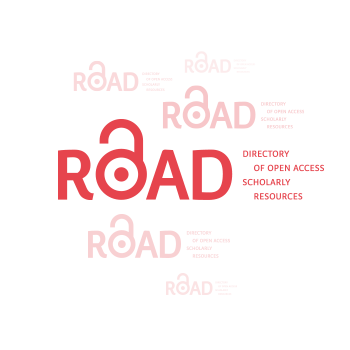فعالية استخدام AFO مع السكتة الدماغية في تطوير الأداء الوظيفي
DOI:
https://doi.org/10.59994/pau.2022.2.67الكلمات المفتاحية:
تقويم الكاحل والقدم، التوازن، المشية، نشاط الحياة اليومية، السكتة الدماغيةالملخص
هدفت الدراسة إلى معرفة تأثير استخدام AFO على التوازن، والمشي، ونشاط الحياة اليومي لمرضى السكتة الدماغية المزمنة، واتبعت الدراسة منهج التصميم التجريبي لحالة واحدة. تركز دراسة الحالة على المرضى الذين يعانون من مرض الشريان التاجي المزمن، حيث سيخضع مريض واحد لعملية AFO، ثم يتم تقييمه عن طريق القياس والاختبارات المتعلقة بالتوازن بواسطة مقياس بيرج للتوازن، والمشي بواسطة مقياس ويسكونسن للمشي، وADL بواسطة مؤشر بارثيل لمدة أسبوعين قبل تلبيس AFO، وبعد تلبيسه، وأظهرت النتائج أن هناك أهمية واضحة في الدرجات التي نتجت للمريض قبل وبعد استخدام AFO، وكانت درجة التوازن للمريض قبل استخدام AFO 26/56؛ ولكن بعد أن أظهرت نتيجة أفضل كانت 40/56، وكانت درجة ADL للمريض قبل ارتداء AFO 40/100، وبعد استخدام AFO تصبح 75/100، كما تحسن المشي بشكل واضح في مرحلة الوقوف والتأرجح كما يظهر القياس، لذلك تم استنتاج أن AFO جيد جدًا للسكتة الدماغية المرضى لتحسين توازنهم، مشيتهم، وADLs. وخلصت الدراسة إلى أن استخدام الأجهزة التقويمية له تأثير جيد على التوازن، والمشي، وADLs. تستكشف هذه الدراسة بتصميمها التجريبي للحالة الواحدة تأثير جهاز التثبيت الكاحلي-القدمي (AFO) على التوازن والمشي والأنشطة اليومية للمرضى الذين يعانون من السكتة الدماغية المزمنة. تشير النتائج إلى تحسن ملحوظ في درجات التوازن والمشية والأنشطة اليومية بعد استخدام AFO لمدة أسبوعين. تسلط الدراسة الضوء على فعالية AFO في تعزيز النتائج الوظيفية وتسليط الضوء على قيمته في عمليات إعادة تأهيل المرضى المصابين بالسكتة الدماغية.
التنزيلات
المراجع
Aflalo, J., Quijoux, F., Truong, C., Bertin-Hugault, F., & Ricard, D. (2022). Impact of Sensory Afferences in Postural Control Quantified by Force Platform: A Protocol for Systematic Review. Journal of personalized medicine, 12(8), 1319. https://doi.org/10.3390/jpm12081319
Akulwar, I. S., & Bane, A. V. (2020). Effect of Rigid Ankle Foot Orthosis on Postural Control and Functional mobility in Chronic Ambulatory Stroke Patients. J Neurol Neurosci, 11(4), 328. DOI: 10.36648/2171-6625.11.4.328
Choo, Y. J., & Chang, M. C. (2021). Effectiveness of an ankle-foot orthosis on walking in patients with stroke: a systematic review and meta-analysis. Scientific reports, 11(1), 15879.
https://doi.org/10.1038/s41598-021-95449-x
Chu, C. L., Lee, T. H., Chen, Y. P., Ro, L. S., Hsu, J. L., Chu, Y. C., Chen, C. K., & Pei, Y. C. (2022). Recovery of walking ability in stroke patients through postacute care rehabilitation. Biomedical journal, S2319-4170(22)00104-4. Advance online publication. https://doi.org/10.1016/j.bj.2022.07.004
De Paula, G. V., da Silva, T. R., de Souza, J. T., Luvizutto, G. J., Bazan, S. G. Z., Modolo, G. P., Winckler, F. C., de Oliveira Antunes, L. C., Martin, L. C., da Costa, R. D. M., & Bazan, R. (2019). Effect of ankle-foot orthosis on functional mobility and dynamic balance of patients after stroke: Study protocol for a randomized controlled clinical trial. Medicine, 98(39), e17317. https://doi.org/10.1097/MD.0000000000017317
Deyhoul, N., Vasli, P., Rohani, C., Shakeri, N., & Hosseini, M. (2020). The effect of family-centered empowerment program on the family caregiver burden and the activities of daily living of Iranian patients with stroke: a randomized controlled trial study. Aging clinical and experimental research, 32(7), 1343–1352. https://doi.org/10.1007/s40520-019-01321-4
Ding, C., Wu, Y., Chen, X., Chen, Y., Wu, Z., Lin, Z., Kang, D., Fang, W., & Chen, F. (2022). Global, regional, and national burden and attributable risk factors of neurological disorders: The Global Burden of Disease study 1990-2019. Frontiers in public health, 10, 952161. https://doi.org/10.3389/fpubh.2022.952161
Feigin, V. L., Brainin, M., Norrving, B., Martins, S., Sacco, R. L., Hacke, W., Fisher, M., Pandian, J., & Lindsay, P. (2022). World Stroke Organization (WSO): Global Stroke Fact Sheet 2022. International journal of stroke : official journal of the International Stroke Society, 17(1), 18–29. https://doi.org/10.1177/17474930211065917
Ishiwatari, M., Tani, M., Isayama, R., Honaga, K., Hayakawa, M., Takakura, T., Tanuma, A., Kurosu, A., Hatori, K., Wada, F., & Fujiwara, T. (2022). Prediction of gait independence using the Trunk Impairment Scale in patients with acute stroke. Therapeutic advances in neurological disorders, 15, 17562864221140180. https://doi.org/10.1177/17562864221140180
Kesikburun, S., Yavuz, F., Güzelküçük, Ü., Yaşar, E., & Balaban, B. (2017). Effect of ankle foot orthosis on gait parameters and functional ambulation in patients with stroke. Turkish journal of physical medicine and rehabilitation, 63(2), 143–148.
https://doi.org/10.5606/tftrd.2017.129
Khatkova, S. E., Kostenko, E. V., Akulov, M. A., Diagileva, V. P., Nikolaev, E. A., & Orlova, A. S. (2019). Sovremennye aspekty patofiziologii narusheniĭ khod'by u patsientov posle insul'ta i osobennosti ikh reabilitatsii [Modern aspects of the pathophysiology of walking disorders and their rehabilitation in post-stroke patients]. Zhurnal nevrologii i psikhiatrii imeni S.S. Korsakova, 119(12. Vyp. 2), 43–50. https://doi.org/10.17116/jnevro201911912243
Kuriakose, D., & Xiao, Z. (2020). Pathophysiology and Treatment of Stroke: Present Status and Future Perspectives. International journal of molecular sciences, 21(20), 7609. https://doi.org/10.3390/ijms21207609
Lee, J. H., Choi, I. R., & Choi, H. S. (2020). Immediate Effects of Ankle-Foot Orthosis Using Wire on Static Balance of Patients with Stroke with Foot Drop: A Cross-Over Study. Healthcare (Basel, Switzerland), 8(2), 116. https://doi.org/10.3390/healthcare8020116
Luger, T., Seibt, R., Cobb, T. J., Rieger, M. A., & Steinhilber, B. (2019). Influence of a passive lower-limb exoskeleton during simulated industrial work tasks on physical load, upper body posture, postural control and discomfort. Applied ergonomics, 80, 152–160.
https://doi.org/10.1016/j.apergo.2019.05.018
Meseguer-Henarejos, A. B., Rubio-Aparicio, M., López-Pina, J. A., Carles-Hernández, R., & Gómez-Conesa, A. (2019). Characteristics that affect score reliability in the Berg Balance Scale: a meta-analytic reliability generalization study. European journal of physical and rehabilitation medicine, 55(5), 570–584. https://doi.org/10.23736/S1973-9087.19.05363-2
Ramos-Lima, M. J. M., Brasileiro, I. C., Lima, T. L., & Braga-Neto, P. (2018). Quality of life after stroke: impact of clinical and sociodemographic factors. Clinics (Sao Paulo, Brazil), 73, e418. https://doi.org/10.6061/clinics/2017/e418
Sinno, S., Dumas, G., Mallinson, A., Najem, F., Abouchacra, K. S., Nashner, L., & Perrin, P. (2021). Changes in the Sensory Weighting Strategies in Balance Control Throughout Maturation in Children. Journal of the American Academy of Audiology, 32(2), 122–136. https://doi.org/10.1055/s-0040-1718706
Smith, M. G., & Patritti, B. L. (2022). Minimal clinically important difference of the gait assessment and intervention tool for adults with stroke. Gait & posture, 91, 212–215. https://doi.org/10.1016/j.gaitpost.2021.10.041
Totah, D., Menon, M., Jones-Hershinow, C., Barton, K., & Gates, D. H. (2019). The impact of ankle-foot orthosis stiffness on gait: A systematic literature review. Gait & posture, 69, 101–111. https://doi.org/10.1016/j.gaitpost.2019.01.020
Tyson, S. F., & Kent, R. M. (2013). Effects of an ankle-foot orthosis on balance and walking after stroke: a systematic review and pooled meta-analysis. Archives of physical medicine and rehabilitation, 94(7), 1377–1385. https://doi.org/10.1016/j.apmr.2012.12.025
Visvanathan, A., Mead, G., Dennis, M.,Whiteley, W., Doubal, F., & Lawton, J. (2019). Maintaining hope after a disabling stroke: A longitudinal qualitative study of patients' experiences, views, information needs and approaches towards making treatment decisions. PloS one, 14(9), e0222500. https://doi.org/10.1371/journal.pone.0222500
Wang, C., Goel, R., Rahemi, H., Zhang, Q., Lepow, B., & Najafi, B. (2019). Effectiveness of Daily Use of Bilateral Custom-Made Ankle-Foot Orthoses on Balance, Fear of Falling, and Physical Activity in Older Adults: A Randomized Controlled Trial. Gerontology, 65(3), 299–307. https://doi.org/10.1159/000494114
Yi, Y., Ding, L., Wen, H., Wu, J., Makimoto, K., & Liao, X. (2020). Is Barthel Index Suitable for Assessing Activities of Daily Living in Patients With Dementia?. Frontiers in psychiatry, 11, 282. https://doi.org/10.3389/fpsyt.2020.00282
Zamysłowska-Szmytke, E., Janc, M., Ławnicki, K., & Śliwińska-Kowalska, M. (2022). Zastosowanie posturografii dla oceny układu równowagi dla potrzeb medycyny pracy [Use of the posturography in balance system evaluation in occupational medicine]. Medycyna pracy, 73(2), 143–150. https://doi.org/10.13075/mp.5893.01164
التنزيلات
منشور
كيفية الاقتباس
إصدار
القسم
الرخصة
الحقوق الفكرية (c) 2022 مجلة جامعة فلسطين الأهلية للبحوث والدراسات

هذا العمل مرخص بموجب Creative Commons Attribution 4.0 International License.
مجلة جامعة فلسطين الاهلية للبحوث والدراسات تعتمد رخصة نَسب المُصنَّف 4.0 دولي (CC BY 4.0)











